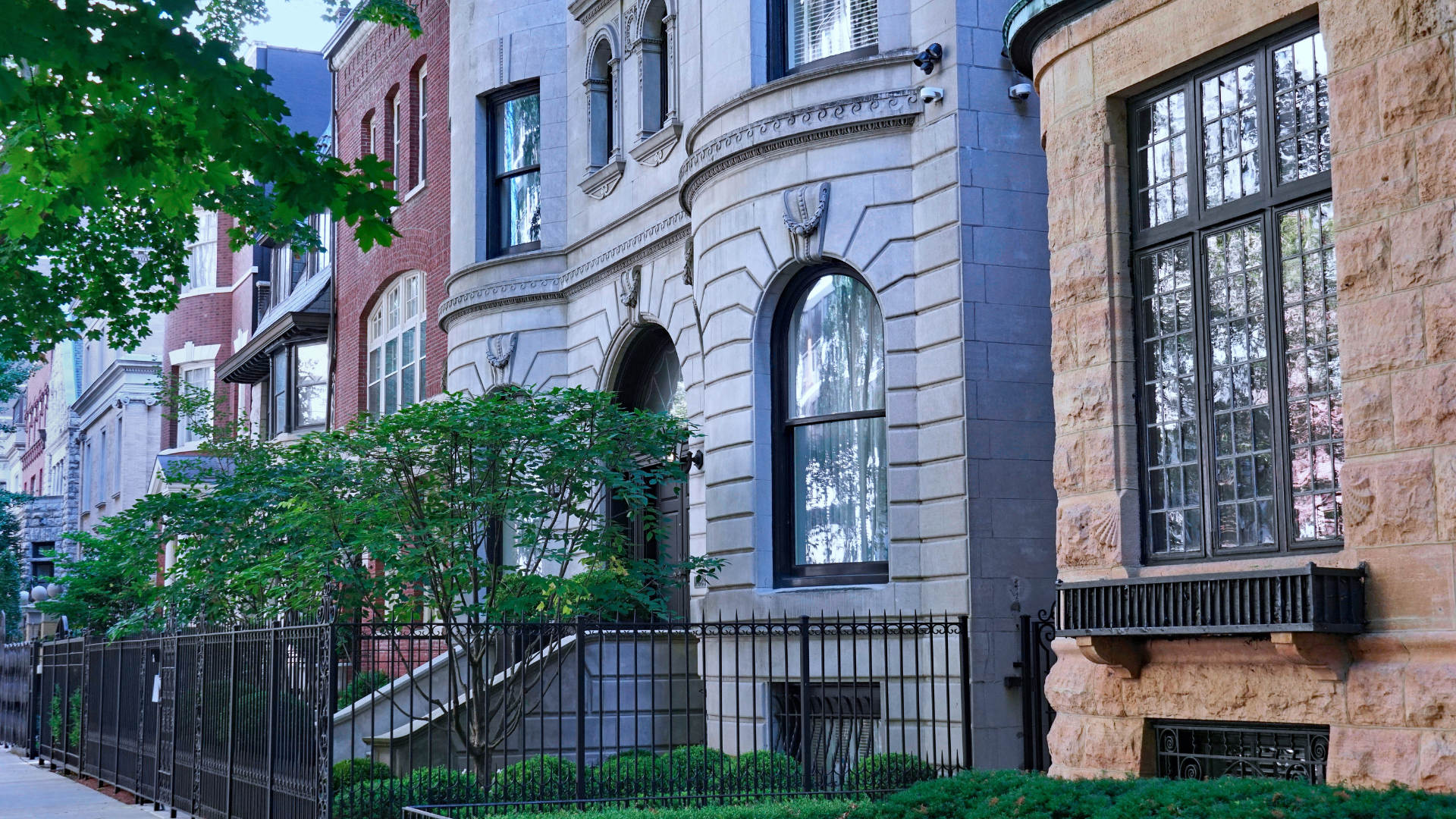As of May 2021, the City of Chicago began issuing permits for Accessory/Additional Dwelling Units (ADUs), reversing a 1957 law that previously deemed them illegal. What does this mean for you and your clients and why is it such a big deal? First, we’ll review zoning basics, which will help put the details of the new ADU law into context.
WHAT IS ZONING & WHY DOES IT MATTER?
Illinois REALTORS® defines zoning as “a form of government regulation which determines how private property can be used by owners.” These regulations are reviewed and enforced by the Zoning Ordinance Administration Division, which is based out of the Department of Planning and Development.
Why does zoning exist? And why are there rules about it? Zoning regulations are prescribed with individual and community quality of life in mind. They take the exciting world of property ownership and urban development and implement limitations — called “use restrictions” — so property owners can be good neighbors not only to each other, but also to the greater community.
Zones are broken into categories, or “districts;” the three most common are residential, commercial and industrial. Each zoning district has differing use restrictions which specify features, such as maximum square footage, building height, vehicular use area (think parking lots or spaces), exterior signage limitations, lot setbacks and more.
When explaining to your clients what zoning is, where a property may fall and why this affects your clients’ renovation or development plans, it may be helpful to use examples.
Here’s one for you: if a property owner in a residential zone wants to renovate their new home so it has a larger front yard, they must first consult the city’s zoning guidelines regarding lot setbacks in their zone. If their desired setback does not fit within the zone’s restrictions, they must adjust the renovation to fit within the limitations, or they need to apply for a zoning variance.
It is crucial you and your clients are mindful of zoning use restrictions when purchasing, renovating or developing real estate. Zoning violations are subject to large fines and legal action.
WHERE CAN I FIND ZONING DISTRICTS & REGULATIONS?
Title 17 of Chicago’s Municipal Code is broken down into chapters detailing the different zoning districts and regulations.
If you’d prefer to look up the zone of a specific area or lot, the city’s website also has an interactive, color-coded zoning map. Searchable via address, portions of addresses, address ranges, pin numbers and even intersecting streets, set aside time to explore the areas you specialize in. The map also gives proximity to transit stations and includes general details about what governs that piece of property.
Prefer in person info? The Zoning Administrator’s office is located at City Hall, 121 N. La Salle St., on the ninth floor.
HOW DO ZONING APPLICATIONS & APPEALS WORK?
You and your clients may contact the Zoning Administrator’s office for one of three reasons:
- Filing an inspection request about another property. An inspection request may come from an alderman or community members if they are concerned about a potential zone violation of a particular property in the community.
- Filing for an opinion request for your property. “Opinion requests” are literal. Instead of using the services of a zoning attorney (who tend to assist with more complex situations), you can formally file for a professional, documented opinion from the Zoning Administrator’s Office about a specific type of circumstance documenting your property.Want to build a masonry wall along your rear property line? File an opinion request! The administrator’s office will research and respond with either approval to move forward with your project or notice that it is not within your zone’s limitations. They do require a $150 filing fee and may take up to 30 days for processing.
- Requesting a zoning certification, zoning variation or zoning map amendment. Zoning certificates are required for the construction or renovation of any residential property composed of five units or less that is not a condominium. The certificate affirms the amount of legally established dwelling units on a particular property. You can expect the Administrator’s average response time for zoning certificates to be at least two weeks.Interested in investing in real estate? These zoning certificates are especially important to protect you and your clients as well as the greater health of our communities. Zoning plays an important role in ensuring what is developed near our homes and businesses are done so with intention, quality and safety in mind.
Keep in mind: If the certificate comes back with a different amount of recognized legal dwellings on the property, you can file an appeal or request a zoning variance or zoning map amendment.
WHAT’S THE DIFFERENCE BETWEEN A ZONING VARIANCE & A ZONING AMENDMENT?
The variance does not change the zone your property falls within — it simply permits an exception to the larger use restrictions. Zoning map amendments come into play when enough variances are involved that the property needs to be completely re-zoned.
WHAT’S THE (APPROXIMATE) JOURNEY OF A ZONING APPLICATION?
Depending on the complexity of the request and the reception it has in the community from residents and the alderman, the timeline for a zoning map change application to be processed may vary.
However, here’s a simplified breakdown of an application’s journey:
- Once an application is submitted through the Department of Revenue, it is then routed to the Zoning Administrator’s Office, where it is reviewed for completeness.
- Once complete, it is referred to the Committee on Zoning, Landmarks and Building Standards, where it is added to the deferred agenda with all the other submitted, completed applications. The committee meets monthly.
- Once the application is heard, it is referred to City Council, who also meets monthly. From there, City Council reviews the application and the Committee on Zoning’s recommendations to either approve or reject it. The Council makes the final decision.
All in all, the fastest a zoning map amendment application can be processed, heard and approved based on time between meetings is three months. If the application is rejected, it can be appealed at the Zoning Board of Appeals.

WHO HAS THE FINAL SAY?
Final voting authority on all zoning matters rests with City Council, yet there are a number of entities and big players involved with zoning in Chicago:
- Zoning Ordinance Administration Division (also referred to as the Zoning Administrator’s Office): An office within the Department of Planning and Development. They have the power to research and make recommendations but they do not vote.
- Committee on Zoning, Landmarks and Building Standards: Composed of City Council members, this committee makes recommendations to the City Council on matters related to zoning.
- Zoning Board of Appeals: Composed of five mayoral-appointed members with City Council approval.
WHAT DO I NEED TO KNOW ABOUT RESIDENTIAL ZONING?
A large majority of zoning within Chicago qualifies as a residential zone, accommodating everything from single family homes to high rises. Fun fact: even religious assemblies, libraries and schools are generally zoned as residential.
When the Zoning Administration reviews an application and makes a recommendation to City Council for the final vote, they’re looking at the specific property’s impact on the quality of life of the larger community. A request for a development in a residential zone is unlikely to be approved if the Zoning Ordinance Administration determines it will have a negative impact on property owners (like, for example, a manufacturing plant in the middle of a neighborhood).
WHAT ARE COMMON ZONING RESTRICTIONS FOR CHICAGO PROPERTY OWNERS?
In Cook County, and especially in the city, common use restrictions include historical landmark designations, lakefront zoning and cannabis zoning.
- Historic preservation is a unique facet of zoning in Chicago, so much that there is an entire landmark district staff in the Zoning Ordinance Administration Department which handles the establishment and maintenance of landmark districts and properties. Famous historic districts in Chicago include the Old Town Triangle, Black Metropolis-Bronzeville, Printing House Row, Logan Square Boulevards, Old Chicago Water Tower and Pullman. Advise your clients about the probability of extra certifications, documentations and steps needed to make significant changes (for example, changing the façade is a common request) to properties that fall into these zones.
- Lakefront protection districts mostly fall within Chicago Park District land, but these regulations are designed to preserve the quality of and public access to the lakefront.
- The Cannabis Zoning Ordinance, approved by City Council in October 2019, regulates where new recreational cannabis dispensaries may open in the City of Chicago.
WHAT ISN’T A ZONING REGULATION?
Zoning cannot control elements that would fall into the jurisdiction of the Chicago Police Department, Department of Buildings or Department of Transportation, nor can it control aspects that are handled within private parties, such as homeowner associations. It all comes down to whether the issue is a matter of private property or public. For example, the closure of a street or the vacation of an alley would be a Department of Transportation matter, rather than a zoning one.
WHAT ABOUT ADUS – WHERE DO THEY COME INTO PLAY?
Accessory/Additional Dwelling Units, a legal and regulatory term for a secondary house or apartment that shares the building lot of a larger, primary house, are important because your clients may now receive approval on the construction and conversion of ADUs on their property. An ADU can include a tiny house in the backyard, a coach house, a granny flat, a build-out space in the basement of a multi-unit or space above a garage.
However, there are important provisions to note. The ADU’s primary structure must be at least 20 years old and there are additional occupancy requirements. Also, the ordinance outlined five “Pilot Zones” or pre-approved areas where ADUs fall within zoning guidelines without a re-zoning or variance request.
If your property or your client’s property do not fall within the Pilot Zone boundaries, you must apply for a zoning variance, which officially permits the property owner to use your property for something that varies from the official zone — without applying for a zone map amendment.
Zoning variance applications can be found and submitted to the Zoning Board of Appeals on the City of Chicago’s website.
Accessory Dwelling Units help increase the housing supply, and REALTORS® firmly support policies that encourage building and construction! You can find a full issue summary on ADUs here.








